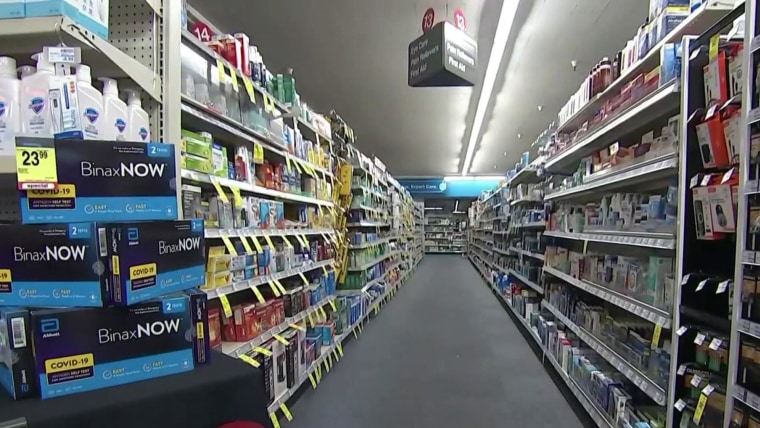
3 times a week, Rodney Coles Sr. offers himself a Covid-19 test in the personal privacy of his own house.
Coles, creator and CEO of the Churches Outreach Network in Greenville, North Carolina, swabs his nose, then stirs the sample into a little tube filled with a reagent. In 10 minutes, his test outcome is exposed on a little paper strip, comparable to a pregnancy test. If a blue line appears, the test is unfavorable. A pink line suggests a favorable finding.
” Taking this test in the house, at your own benefit is simple– whether you are favorable or hoping that you’re unfavorable,” he stated. “However if you’re favorable, you can take preventative measures.”
Complete protection of the coronavirus break out
He got among the 40,000 at-home screening sets being offered in Pitt County, North Carolina, where the Centers For Illness Control and Avoidance and the National Institutes of Health released the very first public health effort in the United States to see if regular, at-home screening can stop the spread of the coronavirus
” The hope of the research study is to see if having screening in the house can decrease spread within household groups or cohabitating groups and therefore minimize spread out into the neighborhood at big,” stated Dr. John Silvernail, Pitt County’s public health director.
The program, which is concurrently being introduced in Chattanooga, Tennessee, asks individuals to utilize the tests as a screening tool, screening themselves 3 times a week– regular sufficient to capture an infection and start separating prior to they can spread it.
” It’s another tool in our tool kit,” Silvernail stated. “It gets these folks into seclusion earlier. It gets contacts into quarantine quicker.”
Individuals are not needed to report their outcomes, however CDC and NIH researchers will be viewing the county’s case numbers, hospitalization rates and even analyzing wastewater for traces of the infection, trying to find any indications that infections are decreasing– an indication that the program is working.
The effort comes as health authorities throughout the United States battle to get more individuals immunized and as cases continue to increase in some areas, specifically in youths.
That’s what’s taking place in Pitt County, where the 7-day typical positivity rate simply struck 7.2 percent, double from simply a couple of weeks back. As cases there continue to increase, vaccination rates have actually stayed stagnant, with simply 26 percent of the county’s 185,000 locals immunized.
” We are fighting that,” Silvernail stated. “As we have actually widened eligibility throughout the state, we have actually seen a few of that vaccine need subside. You understand, the prohibited fruit is constantly the sweetest. When I could not have it, I desired it. Now that I can get it, possibly I’ll wait.”
However Pitt County, thus lots of other areas throughout the U.S., deals with other difficulties too. The county’s biggest city, Greenville, is generally a college town, house to East Carolina University, and the trainee population that appears to be driving the present increase in infections
Beyond Greenville, the remainder of the county is mainly rural, leaving citizens with little access to not simply vaccinations, however likewise screening.
” As you get beyond the city, you get rural extremely, extremely quickly and really rural in numerous locations and it’s frequently difficult to get in from a few of our distant neighborhoods to get to healthcare, to get the screening, to get the vaccine,” Silvernail stated.
Concerns with gain access to likewise reach the county’s big neighborhoods of color, which like the remainder of the U.S., were struck disproportionately hard by the pandemic.
” It’s been extremely hard,” stated Juvencio Rocha-Peralta, executive director of the Association of Mexicans in North Carolina. “You understand among the important things that we needed to acknowledge, some individuals needed to take a trip 20 miles, 30 miles to get to a public health company. I imply that can not be appropriate. I believe Covid actually highlighted the concerns that we confront with the Latino neighborhood in North Carolina and particularly in this area.”
Download the NBC News app for complete protection of the coronavirus break out
Rocha-Peralta and his company have actually invested the last couple of weeks attempting to get the brand-new at-home tests to the Latino neighborhood, establishing tables at regional taquerias and churches. He stated the at-home tests are offering his neighborhood much better access to screening.
” When we head out to the general public, we discuss to them what remains in it and what they require to do with them and they’re extremely open,” he stated. “So that’s the great favorable thing that actually we see. That now individuals understand that they exist, and they can utilize it in their own area.”
The hope is that these tests not just resolve a few of the county’s problems with gain access to, however likewise bridge the space in between increasing cases and plateauing vaccination rates, so that future break outs can be stopped. If effective, NIH authorities state this program might be a design for lowering transmission in other neighborhoods experiencing a rise in cases
For Coles, every unfavorable test result brings a sense of relief. As the CEO and creator of North Carolina’s Churches Outreach Network, he invests his days surrounded by other individuals, working to assist the county’s homeless and starving, and conference with regional police, health authorities and political leaders.
” I felt that we ought to have had this at the very start,” he stated. “I hope that they’re keeping[the program] You understand, there’s an old stating, ‘Do not leave house without an American Express Card.’ Do not go house without a house package.”
Follow NBC HEALTH on Twitter & Facebook

No comments:
Post a Comment